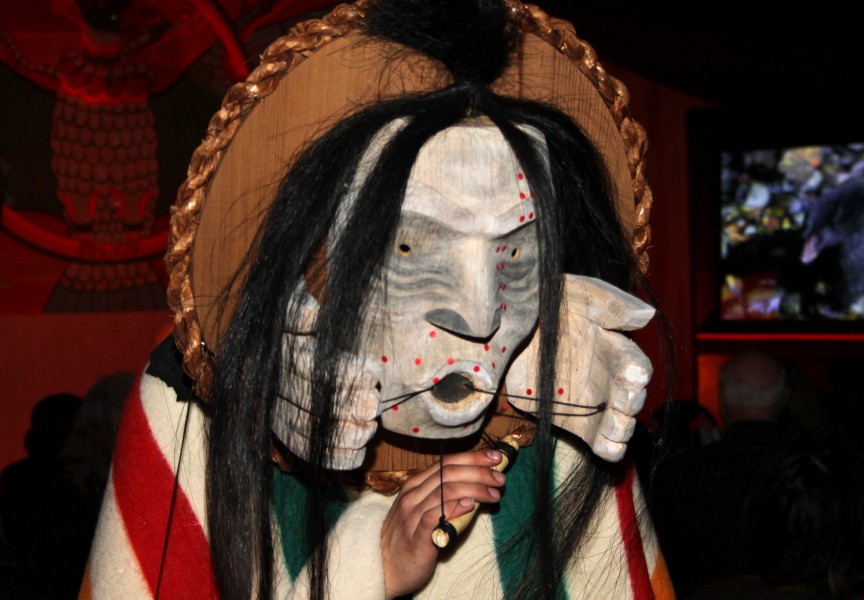Matilda Atleo is quick to tell you she is not a nurse, but her job is to help people in the Nuu-chah-nulth Nations stay healthy and, if they are already sick, to help them manage their illnesses.
Officially, Atleo is the Senior Community Health Development Worker for the Nuu-chah-nulth Tribal Council, and her job is to educate Nuu-chah-nulth people on how to avoid some of the hazards of 21st century diet and lifestyle.
“My job is part of the Nuu-chah-nulth Community Engagement Hub that is part of the new First Nations Health Authority,” Atleo said. “I’m on the ground, delivering community-based education, mostly on healthy living, chronic disease and diabetes prevention. We also do a lot of education in regard to heart disease: high cholesterol, blood pressure.”
That means travelling to Nuu-chah-nulth communities to deliver workshops and to attend health fairs tailored for local needs.
“I was just in Gold River. They asked me to do a diabetes prevention workshop. That included things like eating on a limited budget and cooking. And I talk to a lot of our kids.”
Atleo brought out one of her travelling displays that is guaranteed to disturb anyone who consumes sugar-sweetened beverages (SSB).
The board contains a number of popular drinks, many of which are advertised as “healthy” because they contain real fruit juice. Underneath each drink is a bag containing the equivalent amount of raw sugar in the drinks, measured in teaspoons.
If one cup (250 ml) of milk contains three teaspoons, it should be no surprise that the same amount of chocolate milk contains seven. But 200 ml of pure apple juice contains six.
That can of Coca-Cola contains 11 tsp of sugar, but if you choose the fruit-based Five-Alive, you’ll get 13.
Nowadays it is common to see people consuming a 1.3 litre Super Big Gulp that delivers (gasp!) 32 tsp of sugar.
“Our young people don’t realize that over-consumption of sugars puts you at risk of diabetes,” Atleo said, adding that over-consumption of carbohydrates in general has become a major health risk.
Atleo’s travelling education package also contains a graphic Triglycerides chart that illustrates the routes the different sugars and starches take through your organs and into your bloodstream, where they provide energy.
Or make you sick. Some people are more prone to being damaged by these compounds in their system, Atleo explained.
“When I’m asked to speak, I talk about risk factors for diabetes. I ask people to raise their hands if they have any of the risk factors. Sometimes, people will identify four or five risk factors.”
Atleo said the first one is sometimes a shocker: “Being aboriginal.”
The traditional Nuu-chah-nulth diet was mainly marine-based, with the bulk of the calories based on fats and proteins. Switching to a diet loaded with carbohydrates, especially sugars, is especially hard on the aboriginal person’s metabolism.
To that automatic risk factor, add “A family history of diabetes.”
“Over 40?” You’re at risk.
“Overweight?” Ditto. Tack on “Sedentary lifestyle” and “Smoking,” and your prospects are looking grim.
Those are the well-known risk factors, Atleo said. But there are lesser-known factors, as well.
“We warn people that women who have gestational diabetes during pregnancy are at high risk of developing diabetes later in life,” she said. “I was just at the B.C. Aboriginal Diabetes Conference in Penticton. One of the presenters told us that pregnant women can have symptoms of high blood sugar, but never get diagnosed with gestational diabetes.”
Many of those symptoms of high blood sugar, such as frequent thirst, fatigue and frequent urination, can be dismissed as “normal” symptoms of pregnancy. Then it is likely the woman will never have her blood sugar tested, and that could make for serious problems down the road.
Atleo cited a new phenomenon that is only now becoming recognized.
“If you have borne a child over nine pounds, you are at risk for diabetes. And we’re getting some big, big babies lately.” High body fat and high blood sugar are likely the cause of both effects, she said.
Atleo said one of her dreams is to create a family retreat where families impacted by diabetes can come together for a few days to learn how best to manage what is a lifetime, chronic condition.
A member of Xaxli’p First Nation, Atleo grew up in Lillooet, then moved to Vancouver, where she worked at the United Native Nations head office. There, she met and married the now late Wahmeesh George Watts and moved to Port Alberni, where she raised two sons, Ken and Robert.
Sadly, her late husband failed to take the necessary steps to manage his diabetes, which led to his untimely death in 2005, said Atleo.
Now married to former NTC president Cliff Atleo, she has worked at the NTC for the past 13 years, mainly in health promotion.
To acquire the expertise, Atleo completed her certificate in Diabetes Prevention through Yellowquill College in Winnipeg, as well a diploma in Holistic Nutrition through the Alternative Medicine College of Canada. She is presently enrolled in the Aboriginal Health and Community Administration course at UBC Continuing Studies.
Another of Atleo’s goals is to expand the education capacity within each Nuu-chah-nulth person, by way of a Train the Trainer program in basic nutrition education, to promote healthy eating as outlined in the Canada Food Guide, but with an aboriginal component.
“When you think about traditional food, you also have to look at accessibility. Not everybody has a boat. For some things, you need a license; you can’t just go out and get it any more.
“I like to do traditional foods displays, and I will go to Ucluelet to get them to help me find sea urchins, and chitin – foods that a lot of people really like – just to have that out and show them. These are some of the things that are very healthy, and it would be great to be able to continue to eat them on a daily basis.”
Part of Atleo’s mandate is to help people create their own wellness plan.
“A lot of people have ideas they would like to try, but can’t quite get it together,” she said.
To achieve that, she uses a technique known as Brief Action Planning.
Typically, she explained, you visit a doctor, who tells you what you have to do, and you either do it, or don’t. Brief Action Planning is more like a motivational interview.
“This way, I would already know your health history, and I would ask, ‘Is there anything you would like to do in relation to your situation now?’ Getting you to think about it. All the information would come from you; I wouldn’t tell you to do anything. You would decide what you would like to do, and then you would make a plan.”
There are changes on the horizon as the First Nations Health Authority assumes responsibility for Community Engagement. But Atleo will continue in her role assisting Nuu-chah-nulth-aht in developing Health and Wellness plans geared to the needs of each individual community.






